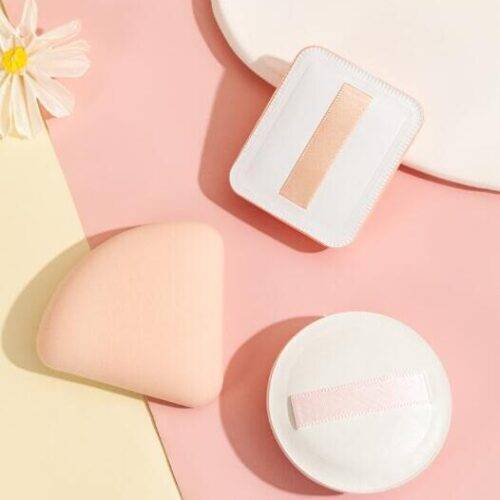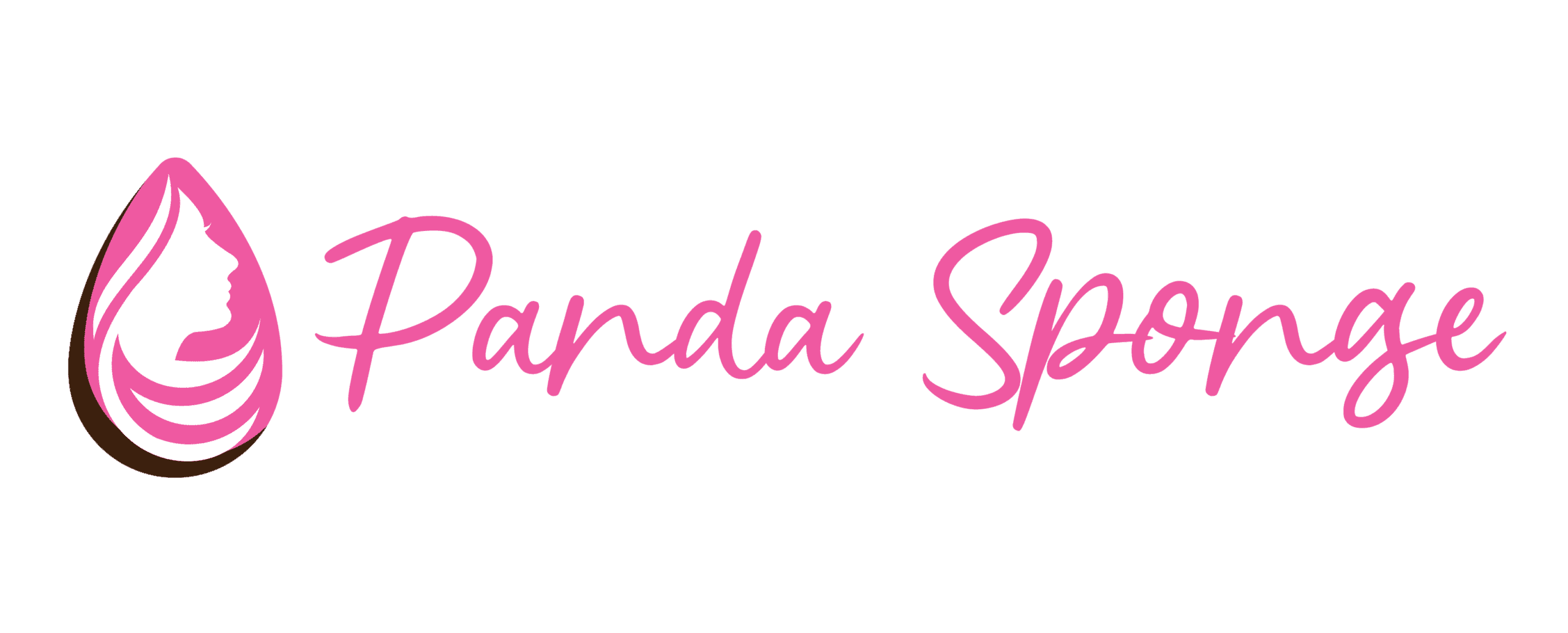Makeup puffs and sponges are two of the most popular tools for applying makeup. They are affordable and easy to use but have different pros and cons.
Makeup puffs are made of a soft, absorbent material that helps to blend makeup evenly. They are versatile and can apply various makeup products, including foundation, concealer, and powder. However, if adequately sanitized, makeup puffs can easily clean and harbor bacteria.
Makeup sponges are also made of a soft, absorbent material but are typically more dense than makeup puffs. This makes them better for blending foundation and concealer, as they can help to create a smooth, flawless finish. However, makeup sponges can be more challenging to control than makeup puffs, and they can also be more absorbent, leading to makeup buildup.
So, which is better for your makeup? It depends on your individual needs and preferences. If you are looking for a tool that is easy to use and versatile, a makeup puff may be a good option. If you want a tool to help, you create a smooth, flawless finish, a makeup sponge may be a better choice.
The Basics: Understanding Makeup Puffs and Makeup Sponges
Makeup application tools have evolved over the years, and today, makeup puffs and sponges are two popular options used by professionals and makeup enthusiasts alike. Knowing how to use different makeup tools effectively is essential for achieving a flawless look. Understanding their differences can significantly improve your beauty routine.
What is a makeup puff?
Makeup puffs, known as powder puffs, are soft, round, and flat cushions typically made of velour, cotton, or other synthetic materials. They have been used for decades to apply loose or pressed powder products, set makeup, and create a smooth, matte finish. Makeup puffs are excellent for controlling shine and reducing excess oil on the skin. They come in various sizes, with smaller ones suitable for travel and larger ones designed for at-home use.
To use a makeup puff, dip it lightly into your powder product, tapping off any excess before gently pressing or rolling it onto your face. The dabbing or rolling motion helps the powder adhere evenly to the skin, providing a more natural and seamless finish. Makeup puffs are ideal for touch-ups throughout the day, especially in areas where makeup tends to fade or become oily, like the T-zone.
What is a makeup sponge?
Makeup sponges, also known as beauty blenders, have become a game-changer in the makeup world. These versatile tools are typically made of latex-free foam and are designed to be used damp. They are known for blending and building coverage with liquid and cream products, including foundation, concealer, and cream blushes. Makeup sponges come in various shapes, such as teardrop, egg-shaped, or flat edge, each serving specific purposes in makeup application.
Using a makeup sponge is simple but effective. Start by dampening the sponge with water until it expands and becomes more prominent. Squeeze out excess water and use the sponge to stipple or bounce the product onto your skin. The bouncing motion creates an airbrushed effect, providing a seamless finish with no streaks or lines.
What are the pros and cons of makeup puffs?
Pros:
- Makeup puffs are easy to use and versatile.
- They can apply various makeup products, including foundation, concealer, and powder.
- They are affordable.
Cons:
- Makeup puffs can be challenging to clean and can harbor bacteria if not properly sanitized.
- Achieving a flawless finish with them can be challenging as they are more precise than makeup sponges.
What are the pros and cons of makeup sponges?
Pros:
- Makeup sponges are more absorbent than makeup puffs, which can help to create a smooth, flawless finish.
- They are more precise than makeup puffs, making it easier to achieve a flawless finish.
- They are easy to clean and sanitize.
Cons:
- Makeup sponges can be more challenging to control than makeup puffs.
- They can be more expensive than makeup puffs.
How to choose the right makeup application tool for your skin type
Choosing the right makeup application tool depends on your individual needs and preferences. If you have oily skin, you may choose a makeup puff to help absorb excess oil. A makeup sponge is recommended for dry skin, as it can help moisturize your skin.
Texture Matters: Examining the Different Material Choices
When applying makeup, your tools can significantly impact the final result. Makeup puffs and makeup sponges are two popular choices for achieving flawless application, but their textures and materials make them distinct tools for makeup enthusiasts.
1. Makeup Puffs: Soft and Velvety
Makeup puffs, often made from velour, cotton, or other soft materials, have been used for generations to apply various makeup products. The texture of makeup puffs is soft and velvety, providing a gentle touch on the skin. These puffs are usually round or square and are designed for easy gripping and maneuvering during application.
One of the main benefits of makeup puffs is their ability to create a natural and soft finish. The soft texture allows for a light and airy application, ideal for powders, blushes, and setting powders. Makeup puffs are also known for their even distribution of products, giving the face a smooth and seamless look.
2. Makeup Sponges: Versatile and Bouncy
Makeup sponges have become increasingly popular due to their versatility and resilient texture. Most makeup sponges are made from non-latex materials like polyurethane foam or hydrophilic materials. These materials are soft, hypoallergenic, and latex-free, making them suitable for sensitive skin.
The texture of makeup sponges is bouncy and absorbent, perfect for creating a flawless complexion. Depending on the desired makeup finish, they can be wet or dry. When dampened, makeup sponges expand, becoming softer and more pliable, making them excellent for blending liquid foundations, concealers, and cream products.
3. Material Choices: Synthetic vs. Natural
Makeup puffs are typically made from synthetic materials like velour, cotton, or microfiber. These materials are simple to clean and upkeep, allowing for reuse over an extended period. Makeup puffs made from synthetic materials are often cheaper than those made from natural materials, which makes them a budget-friendly option.
On the other hand, makeup sponges come in synthetic and natural options. While synthetic makeup sponges are made from non-latex materials, natural options include konjac root or sea sponges. Natural sponges are biodegradable and eco-friendly, appealing to those seeking sustainable makeup tools.
Conclusion
Makeup puffs and sponges are both great tools for applying makeup. The best choice for you will depend on your individual needs and preferences. Experiment with different types of makeup puffs and sponges to find the best one.
Additional Factors to Consider
In addition to the factors listed above, there are a few other factors that you should consider when choosing between makeup puffs and sponges. These factors include:
- If you have oily or acne-prone skin, it is best to avoid makeup sponges. These sponges are highly absorbent and have the potential to trap bacteria, making them unsuitable for your skin type.
- Your makeup application style: A makeup puff may be a better option if you prefer to apply makeup with a light touch. A makeup sponge may be a better choice if you prefer to apply makeup with more pressure.
- Your budget: Makeup puffs are typically more affordable than makeup sponges.
Panda Sponge – Leading Manufacturers and Suppliers of makeup sponges and puffs
One of the leading manufacturers and suppliers of makeup sponges and makeup puffs, Panda Sponge, stands out in the market for its commitment to quality and innovation. Our range of makeup sponges caters to the diverse needs of makeup artists, beauty salons, and wholesalers. With Panda Sponge, wholesale buyers can access top-of-the-line makeup sponges that promise durability, hypoallergenic materials, and excellent performance.
Regardless of whether one chooses a makeup puff or a makeup sponge, it is crucial to prioritize hygiene and cleanliness. Regularly cleaning and replacing these tools will ensure the makeup application remains flawless and free from potential skin issues.

Get a Quote
Custom Makeup Sponge and Puffs

Maggie Peng serves as the esteemed Product Manager at Panda Sponge, where she has garnered a wealth of experience and expertise over the course of five years. With a primary focus on product design, testing, and development, Maggie has consistently exhibited her prowess in these domains.

